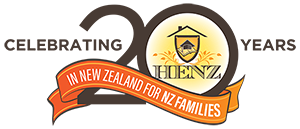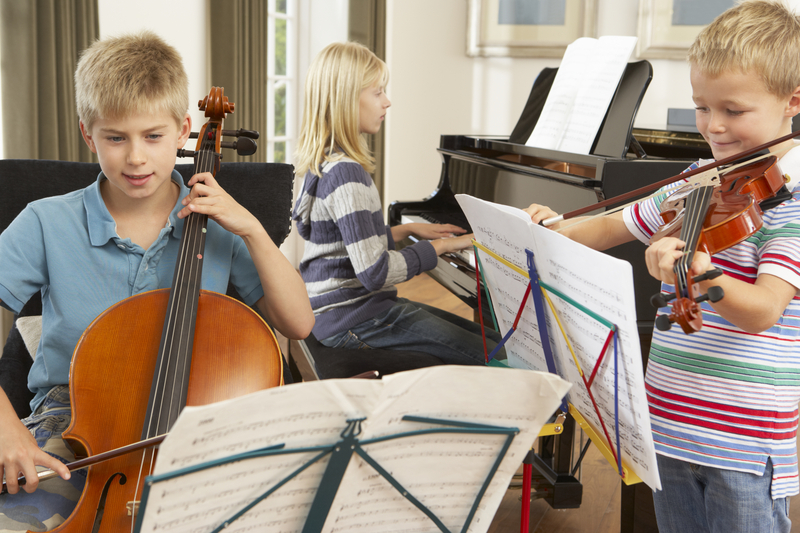by Catherine Duxfield (New Zealand)
A homeschooling mother who used ACE.
One thing that I am passionate about is teaching music to young children. I believe that a good musical beginning is important to the further education of our children. Music is also a part of praise and worship. We are exhorted in Scripture to sing to the LORD and to praise Him on a variety of instruments. This being the case, it may even be considered neglectful if we do not seek to impart at least some knowledge and maybe even a love of music to our children in order for them to adequately participate in praise and worship.
I learnt music by private tuition as a child, and it was not until I had children of my own that I ever considered teaching music. I am not a trained teacher. I do, however, have a strong desire to see children come to love music. My music teaching experience began with my own children over thirty years ago. One of my goals with my family was to be able to sing and play together, and we did this for many years while the children were still at home. I have sung in choirs and played in orchestras, brass bands, and concert bands, and I am still very much involved in music groups in our locality. I have also directed choirs and ensembles both locally and for ACE Student Conventions. For many years I taught the basics of music to four to seven year olds at a local school.
I would like to share with you some ideas to inspire you to teach music to children around you, whether this be your own family, or preschool, junior school, Sunday school, or other groups. You do not have to be a gifted musician yourself. In fact, you may know next to nothing about music, but if you are enthusiastic your young children will not know your limitations. There are often older people around us who have a wealth of knowledge that they could share. Don’t be slow in asking for help, or even a little tuition for yourself! If you cannot sing in tune, don’t worry, your young children will not notice, and they will have fun with music and singing because you are having fun!
It is great for your children to listen to music, but listening alone will not make them musical. Music is intended to be active not just passive. Go ahead – play Mozart to your little ones, or You Tube videos, or DVDs such as ‘Little Einsteins’, but join in with the music and have fun with your children – sing, move, dance, play!
The ideas and suggestions that follow have been put into age appropriate categories. Each age category builds on the one before – so when a child turns three you begin to add some of the ideas from the three year old category to what they are already doing from earlier years. I will be focusing on the first six years. If you have a child who is already older and has not previously done any music, just start with the first age level and move through a little more quickly as the child gains understanding.
Birth to Two Year Olds
Sing to your children right from birth (or before). Choose a variety of styles of songs. Use actions and movement, and even simple percussion instruments such as triangle, woodblock, hand drum, etc. Where you can, alter the words of the song to include children’s names, or to fit what you are doing. For example the song ‘We’re on our Way to Wellington’ could be changed to ‘We’re on our Way to Grandma’s House’, and ‘Polly Put the Kettle On’ to ‘Emma Put the Kettle On’. Remember to include some rhymes – spoken rhythms are important also – use hand and finger actions, and plenty of voice inflection. Children like to hear the same song over and over – you will get bored before they do! Try packaging the same song in different wrappings. For example: ’Twinkle, Twinkle’ can be sung with hand actions, or make some stars on the ends of straws and wave them, or shine lights on the ceiling, or play a triangle while singing! Find some music of different styles to move to e.g. ‘The Blue Danube’ for waltzing, ‘The Dance of the Sugar Plum Fairy’ for ballet, ‘Stars and Stripes’ for marching…..
Sing, move and dance with your children – they will love it. If you are afraid of what the neighbours will think, pull the curtains! Your children are more important than the neighbours!
Below are some examples of songs:
Christian Song: ‘Yes, Jesus Loves Me’
Easy to change words: ‘Go, Car, Go’
Variety of sounds: ‘Old MacDonald’ (I use finger puppets as well)
Actions: ‘Skinnamarinky’, ‘I’m a Little Teapot’, ‘Twinkle, Twinkle Little Star’, ‘My Hands are Clapping’
Marching: ‘The Grand Old Duke of York’
Rhyme: ‘Incy Wincy Spider’
Other songs: ‘Row, Row, Row Your Boat’, ‘If You’re Happy and You Know It’, ‘Are You Sleeping’
Three to Four Year Olds
At this age your children will be able to cope with a few more complex songs. They will also be able to put the actions or instrument playing in an appropriate place. Try some simple songs with more than one verse. Introduce songs for special occasions e.g. Christmas, Easter, birthdays. You can start to introduce some musical concepts such as high and low sounds. Also some very basic music theory can be started such as recognizing crotchets and quavers. During this time your children may be able to clap out (or use percussion instruments) a simple four to eight beat crotchet quaver rhythm. You may want to start to make some resources such as streamers for action songs, or cards to learn musical notes. It is a lot of fun to look around your home for everyday items that could be made into percussion instruments. If you are filling bottles with rice or sand etc make sure that you glue the lid on to secure the contents. Remember to have fun with your children and give lots of praise when they master a song or concept.
Here are some examples of suitable songs for this age group:
Christian Song: ‘This Little Light of Mine’
Easy to Change Words: ‘Six (some versions say five) Currant Buns’ – use children’s names
Variety of sounds: ‘Five Plump Peas’, ‘Bingo’ (each verse replace one more letter of BINGO with a clap)
Actions: ‘Happiness is Something’, ‘Golden Corn’
Rhyme: ‘Five Little Monkeys’, ‘Ten Fat Sausages’
Other songs: ‘Over in the Meadow’, ‘Dinosaur Blues’, ‘Morningtown Ride’
Five to Six Year Olds
Children in this age group are starting to read and so can often follow words for songs while they are singing. They are ready for songs containing several verses and those with choruses and more difficult rhythms. They will also be ready to start reading some musical notation such as notes on the stave, and recognizing musical symbols such as a treble clef. They love games such as Memory, Snap, or Bingo so making musical cards for these games will be an asset. Games such as statues and musical chairs will also be enjoyed. You can be creative – making up your own games to teach music is fun! Some children at this stage will be keen to start learning recorder or keyboard. If you don’t play an instrument consider buying a recorder for yourself as well as a good beginner book and learn along with your child (I have a friend who did this and one of her children went on to study music at university!).
Here are some songs that you might like to try:
Christian Song: Choose a song that you are currently singing at church
Songs that can be sung as rounds: ‘Kookaburra’, ‘Row, Row, Row Your Boat’
Actions: ‘Who Stole My Chickens and My Hens’ (uses two person hand actions)
Other Songs: ‘I Whistle a Happy Tune’, ‘Do-Re-Mi’, ‘Never Smile at a Crocodile’
Resources
There are many resources that I have collected over the years. While some can certainly be purchased new, many are available in stalls and second hand shops. Look for junior percussion instruments in garage sales or ask grandparents to buy them for the children for birthdays! The majority of my teaching tools and card games I have made myself. It is worth laminating any resources that you make so that they last longer. For recordings of music hunt around for CDs or look on the internet – there is plenty around that is free.
The following is a list of helpful resources:
Sounds Fun by Helen Willberg – available as book and CD
Sounds Forty by Helen Willberg – available as book and CD
Sing Hey Diddle Diddle by Beatrice Harrop, publisher A & C Black – book
Count Me In by Brian Hunt (Editor), publisher A & C Black – book
100 Songs for Kids by Dan Coates – book
Budgetbooks Children’s Songs published by Hal Leonard – book
Easy Notes, Wilbecks Music Through Story – book(including flashcards), and magnetic stave
It is up to you now to inspire those young minds — Enjoy!


